
Ways to make food fun
Children with disability can have difficulties with food for so many reasons from physical through to sensory, making mealtimes a stress point for many families. Besides the more serious business of feeding therapy, enteral feeding and the ins and outs of nutrition covered elsewhere in the issue here are a few light-hearted ideas for making food fun for your child.
CHANGE HOW A MEAL IS SERVED
You could focus on colour when serving a meal – so many children love rainbows and a bright platter of foods can be highly appealing. A range of different coloured foods will also help introduce a variety of nutrients into your child’s diet.
Why not make a game out of seeing who can be the first to eat a whole rainbow of colours within a week.
Another idea for experimenting with colour is to use food colouring to change up boring looking pasta. Rainbow pasta, anyone?
Plate selection is another way you can make a difference at the table. There are a number of fun options on the market, even ones that make finishing a meal a game.

If your child hates it when foods touch each other, try some plates with dividers.
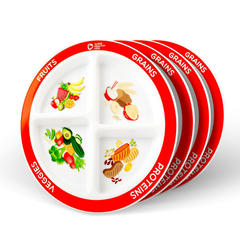
Or how about a plate that helps you make some funny faces?
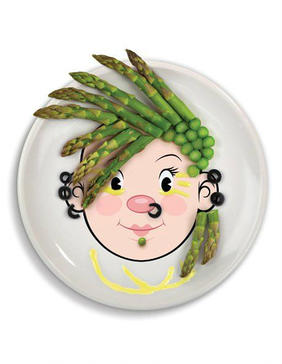
Even without the dedicated face plates you can get creative and make shapes and objects with food; the internet is awash with some great ideas. We love these spreads on toast and cute way of presenting an omelette. You can even let your child experiment with fruit and veg themselves and make their own creations.
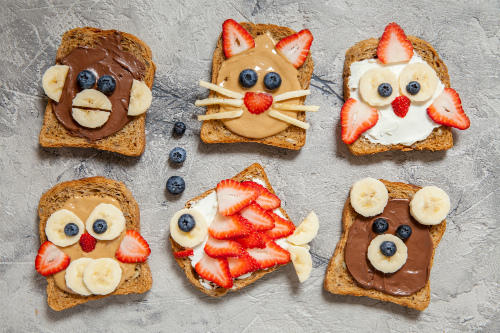
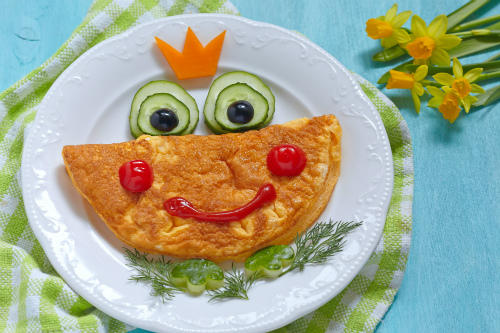
Cooker cutters don’t have to just be used for cookies – use them to press out shapes in a variety of food including toast, sandwiches and pancakes.
INCORPORATE THEIR OBSESSIONS
Think about how you can work your child’s passions into mealtimes. This can be as simple as informing plate choice – thanks to marketing tie-ins there are an endless choice of TV and movie related options available.
Or if your child has an interest in a particular country – you can go into detail about where different foods can be found.
Perhaps your child loves a specific shape such as hearts or stars? Time to put that cooker cutter to work again.


INVOLVE YOUR CHILD
Food shopping with kids isn’t high on the list of any parent’s favourite things but if you can involve your child in the selection of your groceries, this may help them be more engaged in what they are eating. They could help you write the shopping list or perhaps they can choose one or two of the week’s meals.
Think about simple ways they can help prep the meal with you in the kitchen too – stirring, pressing buttons, passing ingredients, measuring and cleaning up are just a few ideas. Playing ‘restaurants’ could motivate some children too. Choose who gets to be the waiter and maybe make up a little menu.
You could also make a fun game of naming a meal or even change the name of ingredients to something fun – your child might be more inclined to eat broccoli (one can dream!) if you call it ‘baby trees’ for example. Or perhaps a green smoothie could be ‘monster juice’ – the possibilities are endless.
Meals that allow children to serve themselves (if they are able) are also a great idea as they will feel that they have more control over what is on their plate.
GET OUTSIDE
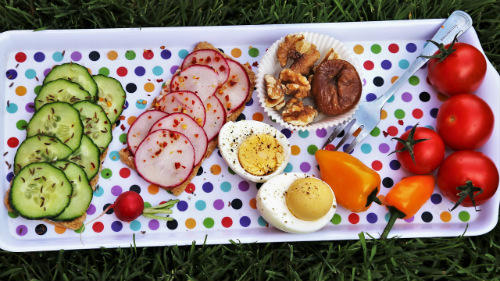

While children need to learn to eat at the table it won’t hurt to change things up sometimes. If the weather is good, perhaps you can take a picnic blanket into the yard or head to the local park. Or as a special treat you could spread a large washable cloth on the floor of the living room. Perhaps this could be a reward for a week of good eating or trying new foods.








